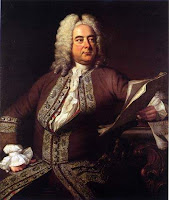You said I’m stubborn and I never give in
I think you’re stubborn ‘cept you’re always softening
You say I’m selfish, I agree with you on that
I think you’re giving out in way too much in fact
I say we’ve only known each other a year
You say I’ve known you longer my dear
You like to be so close, I like to be alone
I like to sit on chairs and you prefer the floor
Walking with each other, think we’ll never match at all, but we do
But we do, but we do, but we doI thought I knew myself, somehow you know me more
I’ve never known this, never before
You’re the first to make up whenever we argue
I don’t know who I’d be if I didn’t know you
You’re so provocative, I’m so conservative
You’re so adventurous, I’m so very cautious, combining
You think we would and we do, but we do, but we do, but we do
Adele says it better than I, but the point of this song, and therefore this post, is that some couples work, even though it seems like they shouldn’t, and some don’t, even though it seems like they should.
Some of the best books, in my opinion, are where the author is able to convince you–and her characters–that even though there are distinct differences in personality, a true HEA is, indeed, possible. And watching the hero and heroine mash out their conflict during the course of the book is the most fun of all.
Take, for example, almost any of Loretta Chase‘s books: In Lord of Scoundrels, for example, it seems as though Dain and Jessica are the least likely pair EVER to fall in love. But she figures out that there’s depth behind the big lummox, and he realizes he is, indeed, worthy of such a lovely creature as Jessica (and that she likes him), and their HEA is totally and completely believable.
Or, for a more extreme example, Anne Stuart‘s books; often, the hero or the heroine’s stated goal at the outset of the book is to kill the other. You can’t find an action further away from falling in love than that. But, eventually, they put aside their initial goal because they have gotten to know each other and usually been forced to work together for some greater good (or bad).
I thought of this because (and Diane, you might want to look away), just based on the ads, I don’t at all buy the idea of Gerard Butler and Jennifer Aniston as a couple in The Bounty Hunter. And that kind of believability happens in the gut: There’s no way to figure out what combination of folks will make us believe in the HEA, worse luck for Hollywood.
In plotting and writing my books, I have to cast actors in the roles, or I don’t believe what I’m writing. So I’ve thought a lot about combinations that work, despite themselves–for example, even though they seem very comfortable together, I don’t think Spencer Tracy and Katharine Hepburn were a particularly sizzling pair. That is opposed to Humphrey Bogart and Lauren Bacall, who sizzled all over the place, despite the Hays Code (restrictions on film content, following such films as Barbara Stanwyck‘s Baby Face and Mae West‘s I’m No Angel).
In modern film, one of the sexiest pairings is Angelina Jolie and Brad Pitt in Mr. And Mrs. Smith. Whoa. George Clooney and Jennifer Lopez in Out Of Sight? Also totally buy it, and they obviously never had an off-screen romance. Pride & Prejudice convinced me as to the pairings of Colin Firth and Jennifer Ehle and Keira Knightley and Matthew Macfadyen. Even Greer Garson and Laurence Olivier were believable in the much maligned 1940 version.
Who are your favorite ‘shouldn’t work but they do’ couples, either in books or film? What pairing absolutely did not work for you?










